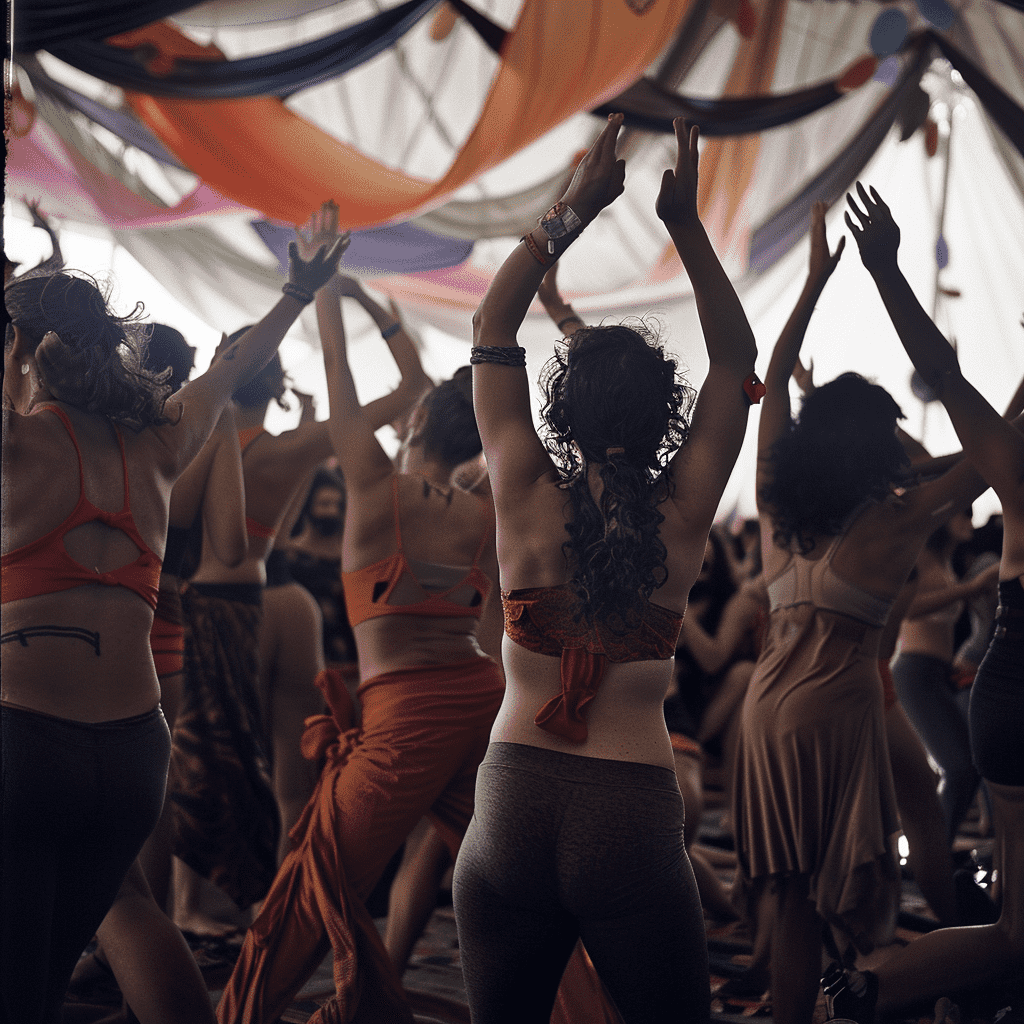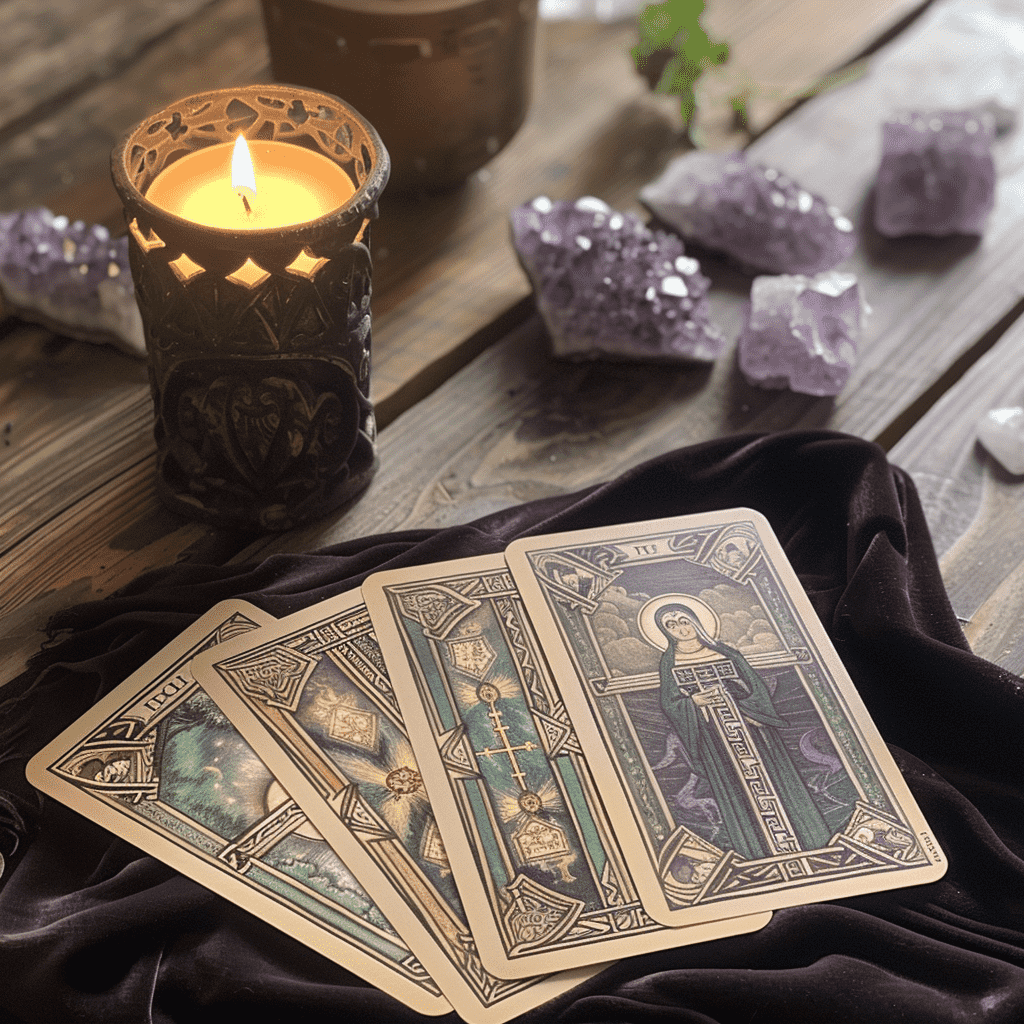Across cultures and throughout history, the archetype of the Divine Mother has been revered and celebrated as a symbol of unconditional love, nurturing, and wisdom. From ancient goddesses to modern spiritual figures, the Divine Mother embodies femininity’s essence and provides humanity’s inspiration and guidance. This revitalization is palpable in contemporary health and wellness landscapes, especially within practices like yoga, meditation, and ecstatic dance. The resurgence of the Divine Mother reflects a growing recognition of the divine feminine’s transformative power in nurturing holistic well-being and spiritual evolution. This article will delve into the multifaceted concept of the Divine Mother, exploring its significance in historical, artistic, and spiritual contexts and reflecting on how it shapes our perception and expectations of modern-day motherhood.
Historical Roots: The concept of the Divine Mother spans ancient civilizations, where goddesses were revered as embodiments of divine feminine energy and principles.
It’s not unusual to hear about some reference to a Divine Mother as a source of inspiration and reverence. Modern wellness modalities often refer to ancient deities like Gaia, the primal Greek goddess symbolizing Earth and nature. Understood as the mother of all life, even thought of as Mother Nature herself, Gaia represents the interconnectedness of all living beings and the natural world. In contemporary wellness/ esoteric practices, her essence is embraced through holistic approaches emphasizing harmony with nature, sustainability, and the nurturing of mind, body, and spirit. Techniques such as eco-therapy, grounding, forest bathing, reiki, and nature-based mindfulness practices reflect Gaia’s influence, promoting well-being by fostering a deep connection with the earth and encouraging a balanced, sustainable lifestyle. This reverence for Gaia underscores a growing recognition of the importance of living in alignment with the natural world to achieve true wellness.
Spiritual Significance:
Ancient Egypt’s goddess Isis symbolized motherhood, fertility, and magic. She was worshipped as the divine mother of Horus, the sun god. Another ancient Greek deity, Demeter, was revered as the Divine Mother and personified the earth’s fertility. She was the goddess of agriculture, grain, and harvest and was responsible for the cycle of life and death. Her daughter, Persephone, was abducted by Hades, the underworld god, leading Demeter to grieve and causing the earth to wither—a myth symbolizing the changing seasons and the cycle of life, death, and rebirth.
Similarly, in Mesopotamian culture, the goddess Ishtar held a prominent place as the Divine Mother. Ishtar was worshipped as the goddess of love, fertility, and war, embodying nurturing and fierce aspects of the divine feminine. She was believed to bring blessings of fertility and abundance to her worshippers and was often depicted with symbols of strength and vitality.
In Christian tradition, the Divine Mother finds representation in the figure of Mary, the mother of Jesus. Mary is revered as the epitome of maternal love, compassion, and grace. She is often depicted cradling the infant Jesus, embodying the divine qualities of nurturing and protection. Mary’s purity and devotion make her a symbol of sacred motherhood and a source of comfort and intercession for believers.

In Hinduism, numerous goddesses are worshipped as manifestations of the Divine Mother. Durga is revered as embodying divine feminine power, courage, and protection. Lakshmi is the goddess of abundance, popular in Yoga circles, reinterpreting ‘abundance’ as good health, wealth, and happiness. Lakshmi fits nicely under the realm of manifesting. She also symbolizes the nurturing and sustaining aspects of the divine feminine. Saraswati is revered as the goddess of knowledge, wisdom, and creativity, representing the transformative power of the sacred feminine in nurturing intellect and artistic expression. Lastly, Shakti is THE mother of all Hindu Goddesses, representing all the universe’s creation, maintenance, and destruction. She is the divine power that creates and allows the world to display itself. As the direct feminine energy, she is a Godhead equal and the pole opposite the Shiva and has been worshiped as the Supreme being.
In other prominent Asian cultures, various goddesses are represented as manifestations of the Divine Mother. In Buddhism, Tara is worshipped as the mother of liberation, embodying compassion, wisdom, and enlightenment. In Chinese mythology, Guanyin, also known as the Goddess of Mercy (the female embodiment of Buddhism), is revered as the compassionate protector of all beings, embodying maternal love and empathy.
These ancient goddesses played pivotal roles in religious rituals, myths, and societal practices. Their modern re-introduction into today’s wellness industry hopes and uses these Goddesses to shape societal attitudes and celebrate women and mothers. They inspire the importance of a more nurturing side as powerful. Their worship and reverence reflected the intrinsic connection between humanity and the natural world, highlighting the sacredness of life, fertility, and the cycles of creation and renewal.
Artistic Muse:
Throughout history, artists worldwide have been moved by the archetype of the Divine Mother, inspiring masterful works of art that capture her beauty, grace, and compassion. From classical sculptures to Renaissance paintings in Western art, depictions of the Madonna and Child symbolize the bond between mother and child, evoking love and devotion. Renowned artists like Leonardo da Vinci, Raphael, and Michelangelo have immortalized the Divine Mother in their iconic works, imbuing her with a transcendent sense of divine grace and serenity.
In Eastern cultures, goddesses such as Kuan Yin in Chinese art and Quan Am in Vietnamese art embody maternal love and compassion, often depicted cradling children or surrounded by devotees seeking solace. Hindu art showcases goddesses like Kali, who, despite her fierce aspects, represents the nurturing and protective qualities of the Divine Mother. Sacred sites such as the Temple of the Sacred Tooth Relic in Sri Lanka and the Parthenon in Greece pay homage to the Divine Mother through their architectural grandeur and spiritual significance, serving as places of reverence and worship for devotees seeking her blessings and guidance.
In contemporary art, artists explore and reinterpret the Divine Mother archetype, infusing their creations with modern perspectives and expressions of divine femininity. This reflects the ongoing relevance and influence of the Divine Mother across cultures and time.
Shaping Modern Motherhood:
The archetype of the Divine Mother continues to influence our perception and expectations of modern-day motherhood, inspiring women to embody qualities of love, compassion, and nurturing care. In a world where motherhood is often redefined as a balancing act as a career and home admin manager, the Divine Mother reminds us of the necessity of reconnecting to ourselves as powerful beings with an appreciation for the sacredness and the importance of the maternal bond. Honoring the Divine Mother within ourselves and others cultivates a deeper love for women’s inherent beauty and wisdom as women and mothers.
Respecting and Celebrating Women:
As we reflect on the archetype of the Divine Mother, it is essential to recognize and celebrate the importance of women as divine mothers in their own right. Whether biological mothers, adoptive mothers, or maternal figures, women play a vital role in nurturing and shaping the next generation. By honoring and respecting women as divine mothers, we can create a more compassionate and equitable world where all mothers are valued and supported in their sacred roles.
How the Divine Mother Shows Up in Modern Health and Wellness Practices
Yoga, Meditation, and Ecstatic Dance:
Within the sacred space of yoga studios, the divine feminine is honored through asana, pranayama, and mantra. Yogic traditions celebrate Shakti as the primordial cosmic energy that embodies the divine feminine principle. This recognition manifests in practices like Kundalini yoga, where practitioners channel Shakti’s transformative energy to awaken consciousness and elevate spiritual awareness.

Meditation is another conduit for connecting with the Divine Mother’s nurturing presence. Meditators invoke the divine feminine qualities of compassion, intuition, and unconditional love through visualization and deep introspection. This inner communion with the Divine Mother fosters emotional healing, self-acceptance, and spiritual alignment.
In ecstatic dance, participants engage in uninhibited movement to access heightened awareness and ecstatic joy. This embodiment practice celebrates the divine feminine through fluid, sensual movements that honor the body as a sacred vessel of divine energy. As dancers surrender to the rhythm of the music, they connect with the primal essence of the Divine Mother and experience profound liberation and empowerment.
Holistic Healing Modalities:
The divine feminine profoundly influences a wide range of holistic healing modalities, extending beyond movement-based practices to encompass energy healing, herbal medicine, and sound therapy. Energy healers often channel the nurturing energy of the Divine Mother Gaia, the primal Greek goddess representing Earth and nature, to facilitate profound healing on physical, emotional, and energetic levels. Gaia’s essence, symbolizing the interconnectedness of all life, is invoked to restore harmony and balance.
In addition to Gaia, other goddess archetypes play pivotal roles in these practices. For instance, herbalists may call upon the wisdom of Demeter, the Greek goddess of the harvest, to harness the healing properties of medicinal plants. Demeter’s association with fertility and growth guides the use of herbs to restore vitality and wellness. Sound therapy also draws inspiration from goddesses like Saraswati, the Hindu goddess of knowledge, music, and the arts. Practitioners use sound vibrations to clear energy blockages and promote spiritual awakening, mirroring Saraswati’s attributes of clarity and purity.
Angelic Reiki practitioners often evoke divine feminine energies, such as those of the Archangel Ariel, known for her nurturing and healing qualities connected to nature. Similarly, Starseed and Light Language healers may call upon Pleiadian or Arcturian energies, which are often associated with nurturing, compassion, and the transformative power of the divine feminine.
These holistic approaches reflect a deep reverence for the divine feminine’s nurturing and transformative power, emphasizing a return to natural and sustainable healing methods. By integrating the wisdom of these ancient goddesses and celestial energies, modern wellness practices aim to cultivate a balanced and harmonious life, honoring the sacred connection between humanity and the natural world.

Esoteric Divination Tools:
The resurgence of the Divine Mother is also evident in esoteric divination tools like tarot cards and astrology. Tarot decks featuring goddess imagery and symbolism offer seekers a means of connecting with the divine feminine and receiving intuitive guidance. Major arcana archetypes within the tarot deck evoke the Divine Mother, such as The Empress, representing fertility, creativity, and abundance; The High Priestess, symbolizing intuition, mystery, and inner wisdom; and The Moon, reflecting emotional depth, the subconscious, and the cyclical nature of life.
Astrologers interpret celestial alignments through the lens of goddess archetypes, providing insights into soul growth and spiritual evolution. For example, Venus embodies love, beauty, and harmony, while the Moon represents nurturing, intuition, and emotional well-being. Individuals can better understand their spiritual paths and personal development by aligning with these divine feminine energies.
Together, these esoteric tools and holistic practices emphasize the transformative power of the divine feminine, guiding individuals toward greater self-awareness, healing, and harmony with the natural world.
As practitioners immerse themselves in these transformative practices, they awaken to the inherent divinity within themselves and the world around them. The resurgence of the Divine Mother in modern health and wellness is a powerful reminder of the sacredness of life and the profound potential for healing and spiritual growth within each of us.
Conclusion:
The archetype of the Divine Mother transcends time and culture, serving as a timeless symbol of love, compassion, and maternal wisdom. Through art, mythology, and spiritual tradition, we are reminded of the sacredness of the maternal bond and the profound impact of women as divine mothers. As we celebrate the Divine Mother within ourselves and others, may we honour and uplift women’s inherent beauty and grace as mothers, embracing the divine feminine within us all.
References:
1. “Shakti Rising: Embracing Shadow and Light on the Goddess Path to Wholeness” by Kavitha M. Chinnaiyan
2. “The Great Mother: An Analysis of the Archetype” by Erich Neumann
3. “Women Who Run with the Wolves: Myths and Stories of the Wild Woman Archetype” by Clarissa Pinkola Estés
4. “The Wild Unknown Tarot Deck and Guidebook” by Kim Krans
5. “Astrology for the Soul” by Jan Spiller

